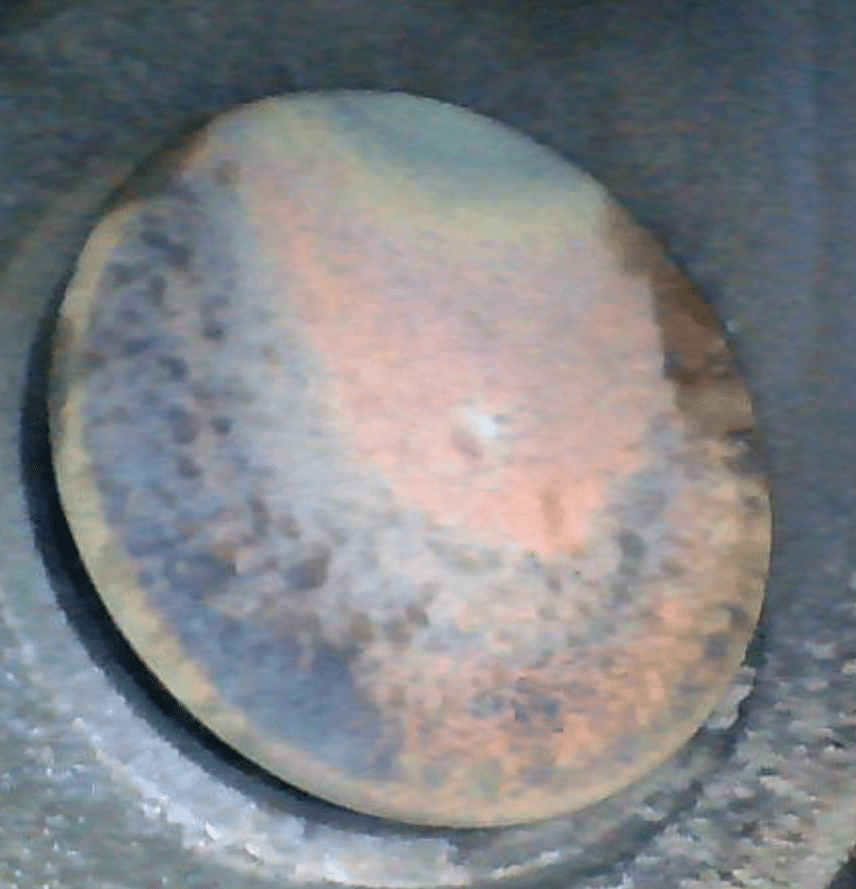Hockey playoffs are in full swing. It’s usually about this time of the year that I rewatch my favorite hockey movie “Miracle”, about the 1980 Olympics. So many great performances, including fellow pilot Kurt Russell as Herb Brooks, but none better than Eddie Cahill playing US goalie Jim Craig. And now you’re wondering, how is he going to tie hockey to engine data analysis? Here’s how.
Sometimes analysis tells us exactly where to look to fix a problem. a clogged injector, a bad spark plug, a pinched cooling baffle – all pretty easy to spot in the data and gratifying to know that we helped save the owner time and money. That’s offense. Equally gratifying from an analysis point of view is when we keep an owner from scheduling and paying for unnecessary maintenance on something that isn’t broken. That’s defense.
First up is a Piper Saratoga powered by a Lycoming IO – 540 and data from an Insight G4 with a 1 second sample rate. The flight is only about seven minutes starting at the 15 minute mark, but this includes ground ops before and after the flight. EGTs on top, CHTs and FF below. Cursor is on the takeoff roll.
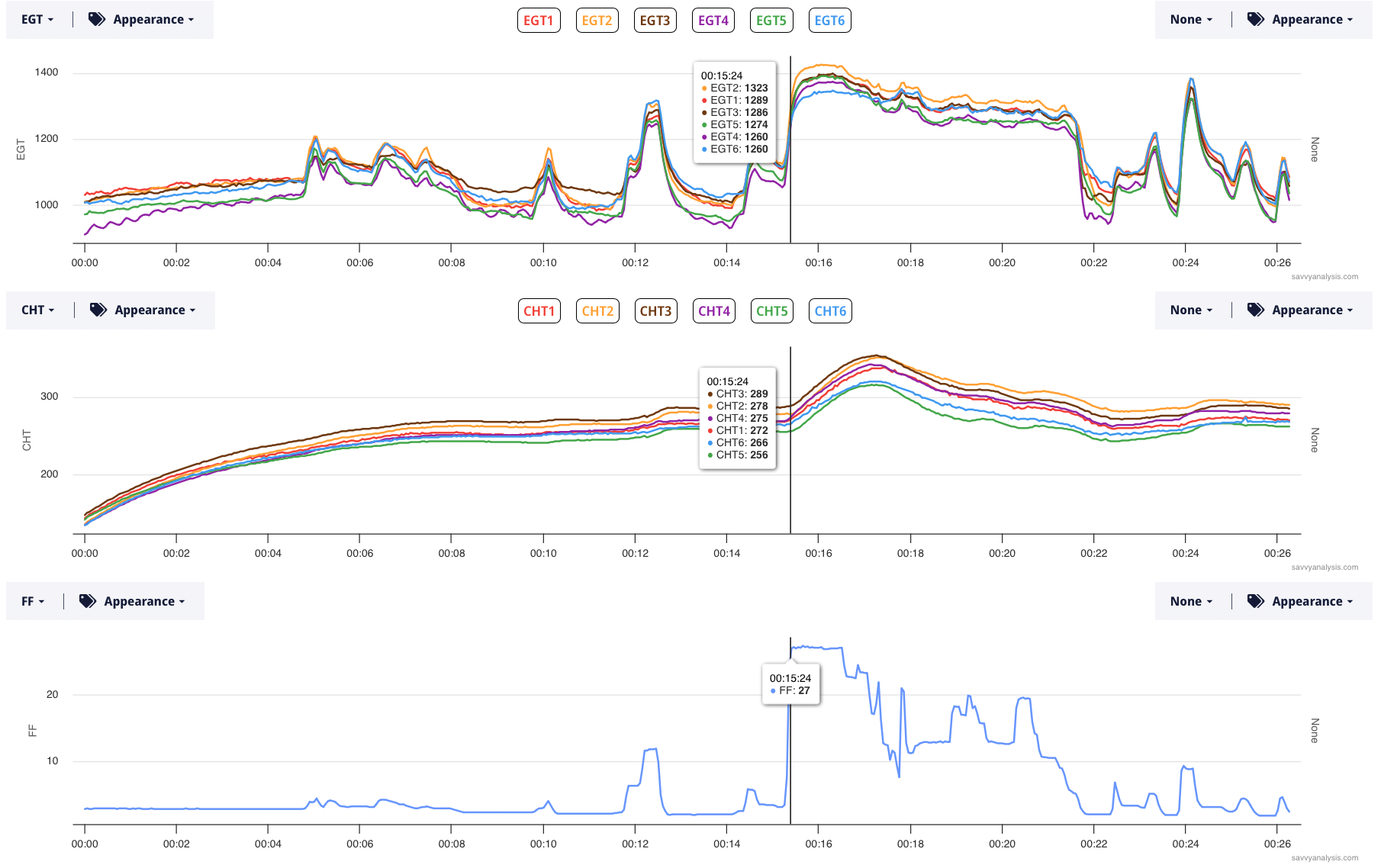
This is a flight school airplane, so the ticket was submitted by the Maintenance Director, using information provided by the pilot. The pilot reported several instances of RPMs surging after the first power reduction, so the flight was cut short and they returned with an uneventful landing. The bumps in fuel flow after the 22 minute mark are a series of run ups to help troubleshoot the problem. Let’s look at MAP, RPMs and FF for the in-air segment of the flight.
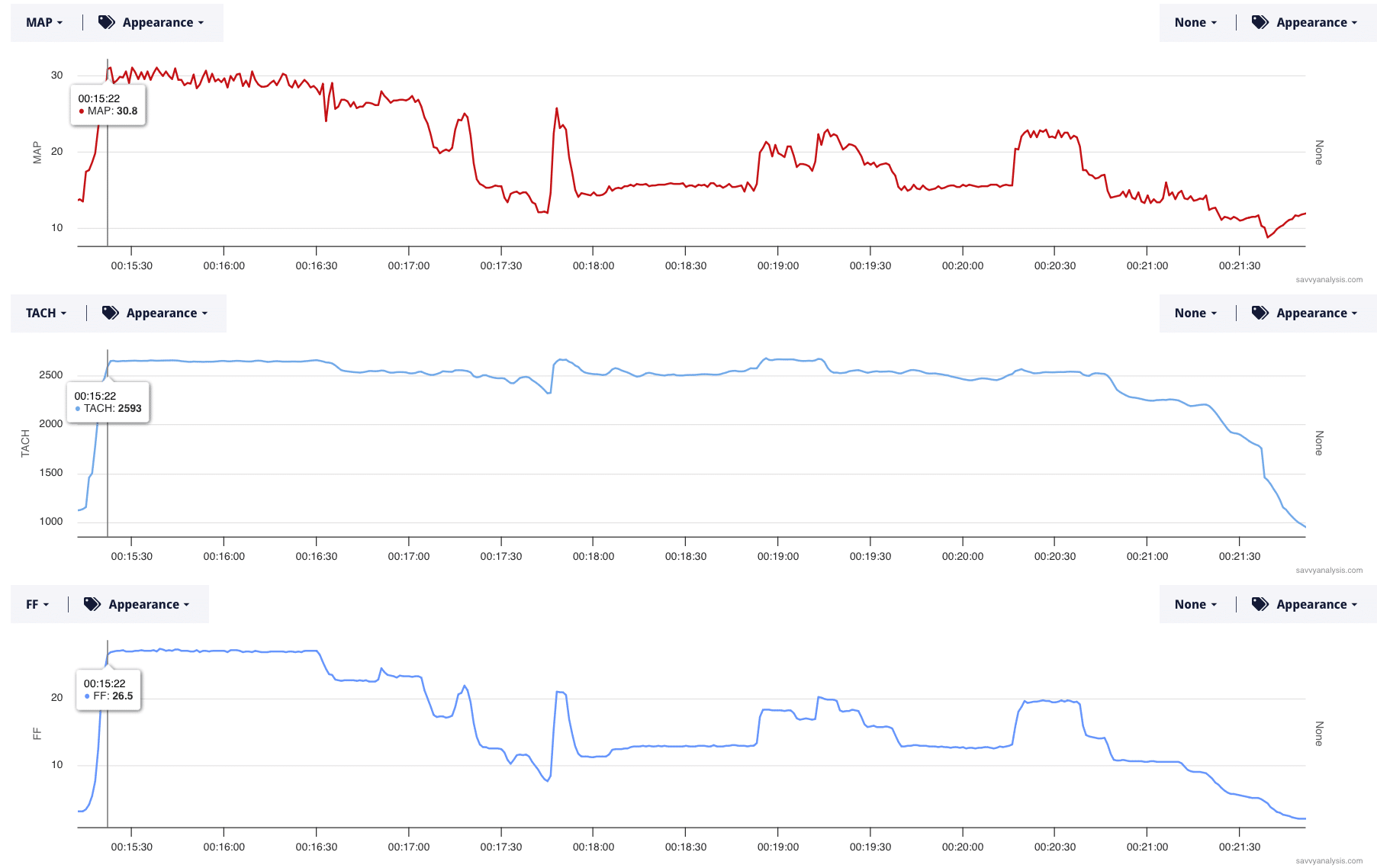
Based on the report of a surging prop, we expected to see a lot more fluctuation in RPMs (which are labeled TACH in the data.) Starting at about 90 seconds after takeoff, there is some movement in the RPM trace, but it’s hard to find a spot where there isn’t movement in either MAP or FF as well.
The first thought I had was that the pilot had forgotten to cycle the prop. Props that haven’t been cycled will often surge a little when the warm oil of the engine replaces the cool oil in the prop hub. Don’t ask me how I know…
Neither of these are depicted, but when I checked the TACH trace, I could see the prop cycling at around the 22 min mark. Oil temp at takeoff was 136º – not toasty warm but probably warm enough to not cause surging. Besides, the pilot had reported surging after the first power reduction, and not during the takeoff roll.
Then the Maintenance Director posted that the fuel servo had been overhauled during recent maintenance. Good to know, but this wasn’t really acting like a fuel problem. The thing that kept nagging me was the MAP trace was so jumpy, and not just at high power settings. I asked my colleagues to take a look at the data, and as we were formulating our next steps, the Maintenance Director reported that the duct between the air filter and the fuel servo was loose at the servo end.
That made sense – the duct was blocking the airflow – and while MAP and FF were making uncommanded changes, the pilot was feeling it as prop surges. The duct had been removed as part of the servo OH.
Next is an RV-14 powered by a Lycoming IO-390 Thunderbolt and data from a Garmin G3X with a 1 second sample rate.
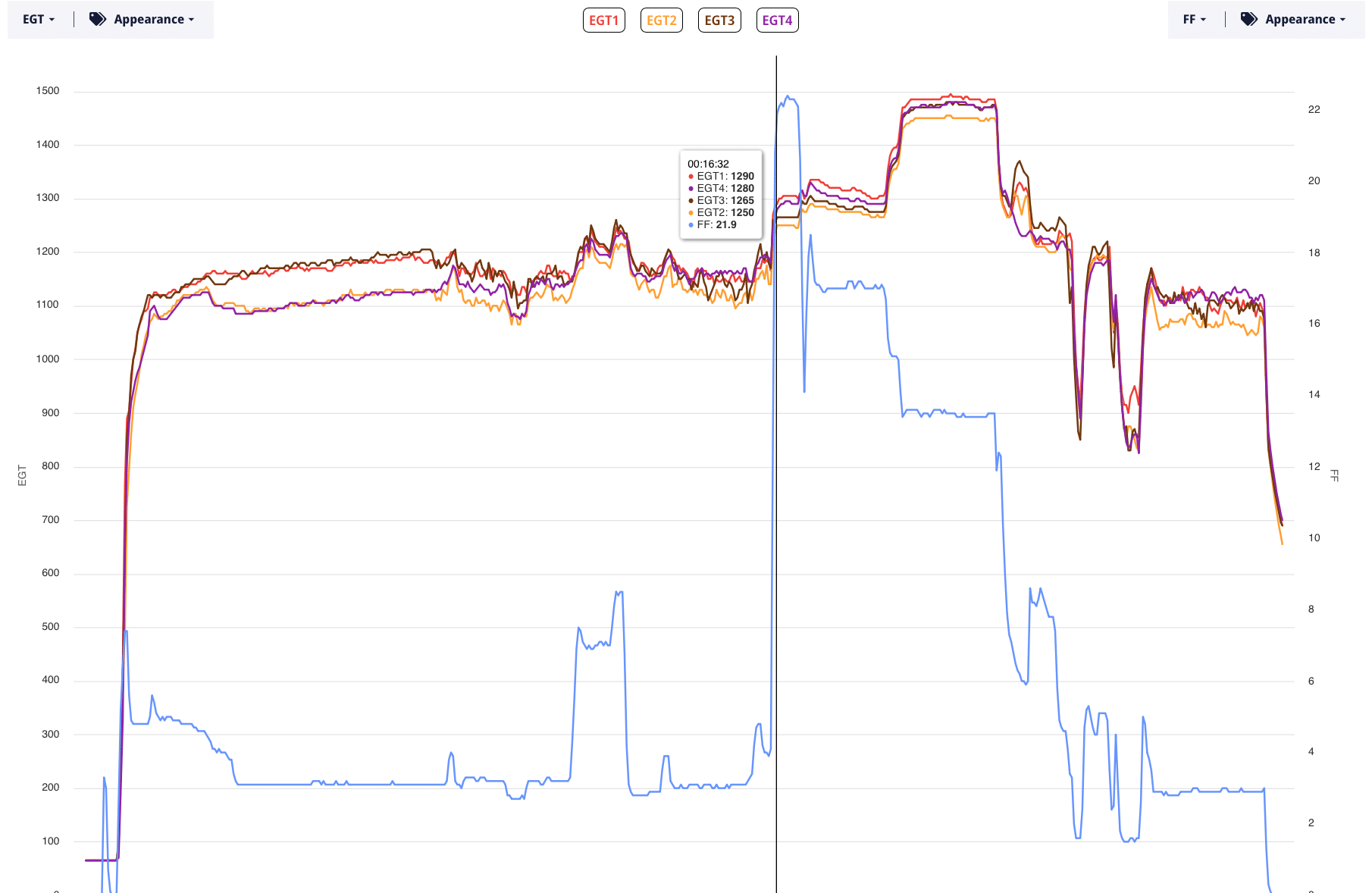
My colleague Ray worked this ticket. Here’s the initial post.
We have had a total of 5 flights on this engine/plane thus far, and in all of the flights, we are experiencing an engine misfire while on the ground.
Specifics on the engine:
IO-390-EXP (Thunderbolt) new from Lycoming
Delivered in November of last year
Two P-Mags with automotive plugs
Airflow Performance fuel injection
Unaltered since built by the factory
Here’s some facts we’ve discovered about this behavior:
The misfire happens only when the engine is quite warm, for example after a flight and taxi back, or after the runup.
When cold, the engine runs very smoothly at idle and higher.
The misfire disappears when running at 1300 RPM or more.
The misfire seems unaffected by leaning on the ground.
The misfire is unaffected by running on the Left, Right, or Both mags.
Engine runs strong and smooth in the air at all times.
Ray, who built and flies an RV-7, asked if the P-Mag ignition wires have at least a 1/4″ gap along their entire length to avoid mag cross-fire.
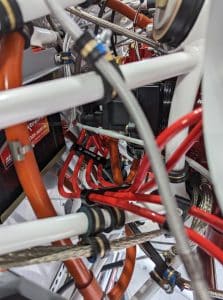
The client reported that the wires were separated – using automotive aluminum separators
Next is a Cessna 310 powered by Continental IO – 550s and data from a JPI 960 Twin with a 1 second sample rate. EGTs isolated.
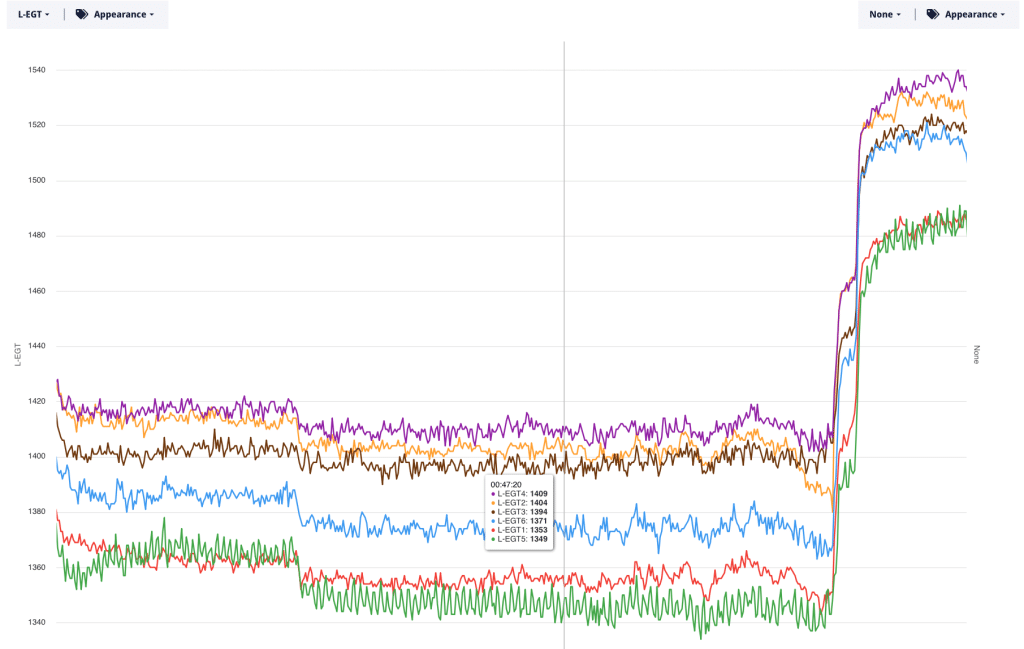
The green trace of EGT 5 has a persistent oscillation of about 15º. All of the EGT’s are jumpy, but the pattern in EGT 5 is too regular to attribute to noise in the data. When we see a pattern like this, we recommend borescoping the exhaust valve, and in this case it revealed asymmetrical heat distribution and a significant burned spot at the top of the picture.
